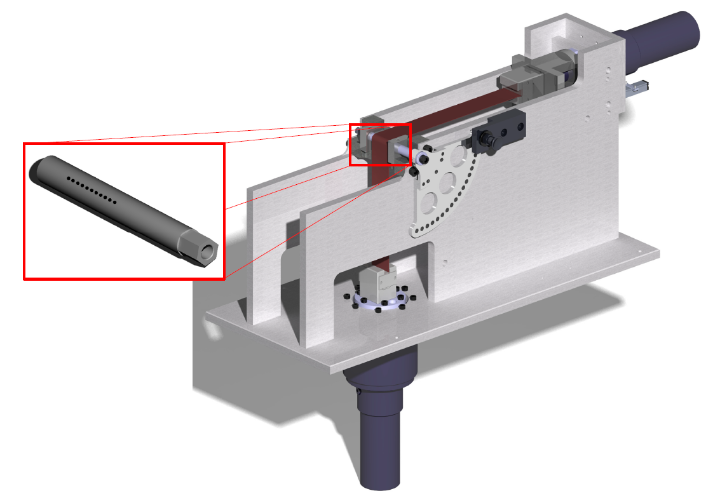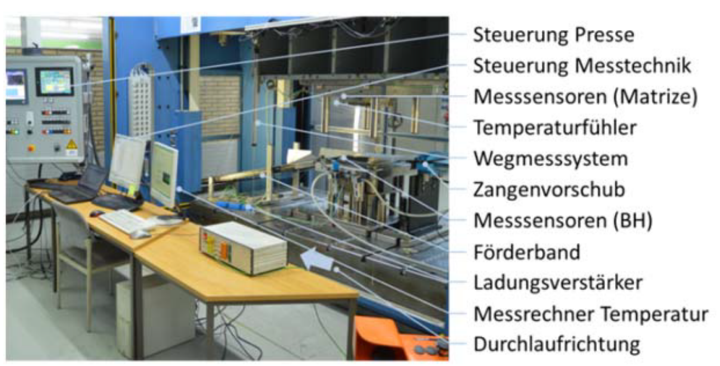Tribo systems in sheet metal forming are characterized by specific surface topographies of the semi-finished sheet metal products, the tools and the quantity and properties of the lubricants used. They therefore have a significant influence on the forming forces, relative movements and temperatures acting in the tool. Research projects at the institute therefore focus on the qualification of functional coatings on forming tools, modeling issues for mapping tribological effects in process simulation and investigations into the suitability of sustainable lubricant systems.
Strip drawing system with deflection for investigating the friction behavior on tool radii
In sheet metal forming, mineral oils and oil-water-based emulsions are generally used as lubricants to prevent wear and component damage and to improve friction conditions. On the one hand, these conventional lubricants contain environmentally hazardous additives and, on the other, the components have to be cleaned afterwards. By using volatile media as a lubricant substitute, these problems can be countered, production costs reduced and process stability increased. To achieve these goals, volatile media such as nitrogen or liquid carbon dioxide are fed directly into the effective joint between the sheet metal and tool surface via laser-drilled micro-holes in the forming tool in this research project. In further investigations, excellent results were demonstrated with regard to process stability and the extension of process limits using a deep-drawn rectangular cup. The tearing limit could be increased by up to 250% compared to conventional lubrication. Further investigations to characterize the novel tribological system on highly loaded tool radii show the high potential of this lubrication system. Endurance tests with the already tested rectangular geometry are planned to evaluate and optimize the wear behaviour.
Duration: 03.2018 - 02.2020
Test tool with integrated measurement technology for continuous measurement of the tribological system.
Friction coefficients for the simulation are currently determined from simple model tests such as the strip tensile test. However, in order to increase the predictive accuracy of the simulation, precise knowledge of the tribological system must be available. The aim of this research project is to be able to leave the model level when determining local friction coefficients and thus reduce the simplifications made. This is realized by a novel in-situ measurement of the retention forces.
Sensors installed 3 mm below the tool surface measure the changes in the elastic deformation of the tool structure caused by the tribological system. This measuring principle means that the active tool surfaces are not touched and there is no influence on the forming result. The results show that the temporally and locally variable restraining forces measured in this way can be integrated into the simulation and can thus map the forming process with improved prediction accuracy. Furthermore, the change in the tribological system during tool start-up could be mapped in a near-series endurance running process. Simulations with the retention forces measured in this way represent reality more accurately than when using conventionally determined friction coefficients.
Duration: 02.2013 - 01.2017



